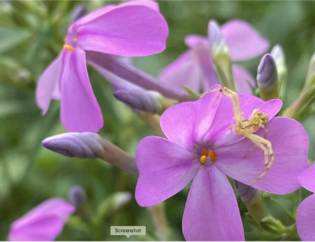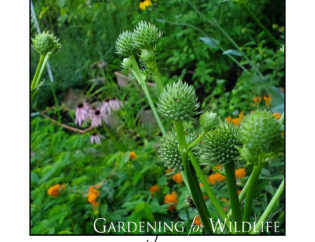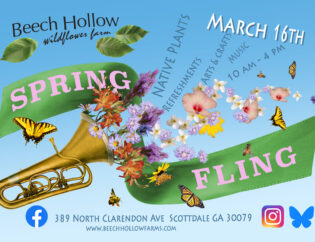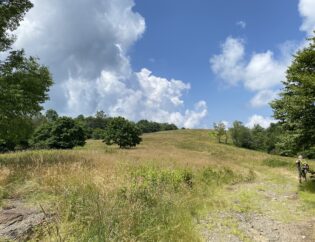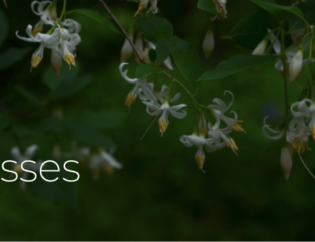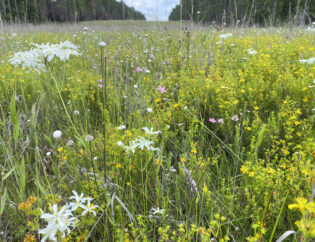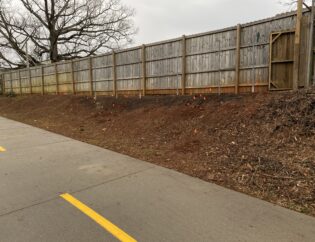Pandra and I had the pleasure of attending the 30th annual Cullowhee Native Plant Conference last week, and visions of host plants are still dancing in our heads. Dozens of great speakers gave informative and inspiring talks on everything from seed saving to plant-fungus associations in the soil. I’m going to try to relay some of the highlights and a small portion of the knowledge that these people passed to me. 
Doug Tallamy (above, with caterpillar slide) gave two talks at the conference, and they both focused on the importance of native plants as habitat for insects and birds. His book, Bringing Nature Home is one of the most accessible books about ecology that I’ve ever read. It’s been an inspiration to us, and I highly recommend reading it if you haven’t already. The central point is that plants are the source of all energy (via the sun), and in order to transfer that energy up the food chain to birds, mammals, etc. we need insects. LOTS of insects. Native plants co-evolved with our native insects and are therefore the best food for them. Larval host plants are very important in maintaining a healthy population of caterpillars and butterflies. This is crucial for the butterflies obviously, but it’s also crucial for birds. 95 to 100% of a fledgling’s diet consists of caterpillars. No caterpillars = no birds. Dr. Tallamy and his interns have compiled lists of native plant genera and just how many species of butterflies and moths they support. His lists of ‘Best Bets’ for herbaceous and woody plants are tailored for the mid-Atlantic states because he resides in Delaware, but there is much overlap between the Southeastern and Mid-Atlantic ecosystems. He did say that the USDA is probably going to hire his intern to compile lists for each of the 50 states, so we’ll be eagerly awaiting the Georgia list. Oak seems to be the champion of larval life support. Most of us don’t have the space for an oak, or more likely already have a few in/over our yards, but native plum/cherry trees in the Prunus genus are great understory trees and they support over 400 species of caterpillars! As soon as I get the chance the Crepe Myrtle (from India) in my yard is out and a Chickasaw Plum (Prunus angustifolia) is in!
Tradd Cotter (pictured above) gave a very entertaining and informative talk about fungus and their associations with plants. If insects are the crucial link between plants and larger animals, then fungus are the crucial link between soil nutrients and plant roots. He also led a nature walk to demonstrate how to ID various types of mushrooms and other fungi. His company, Mushroom Mountain is a great source for local spawn if you wish to grow edibles in your backyard, but they are also heavily involved in mycoremediation. It still amazes me that people think that mushrooms in the lawn or garden are a bad thing. They make soil, join plant roots into nutrient sharing networks to the benefit of all, and break down complex chemical structures into plant food essentially. Tradd also mentioned in his talk that he had found a fungus strain that preys solely on fire ants, turning them into the infamous “zombie ants” featured in a ‘Planet Earth’ sequence. I don’t know about you, but if I could wipe out the fire ants in my yard with absolutely no toxic chemicals and the myriad of problems they create I’d gladly pay good money for some of those spores. They are still testing that strain to make sure there are no unforeseen environmental impacts.
Last but certainly not least, Janisse Ray gave a very impassioned and inspiring talk about seed saving, the need for the decentralization of our food supply and the creation of local plant/seed exchanges. She has a new book out about seed saving called The Seed Underground. (AJC article about it here) Pandra bought a copy and got her to sign it. She said it took forever because Janisse was having a conversation with everyone and gave them a hug after signing. One of her previous books, Ecology of a Cracker Childhood, is a beautifully written account of her childhood in South Georgia and I urge everyone to read it ASAP. She still lives and works in South Georgia on Red Earth Farm, and will be speaking in Atlanta in November. Here is a Youtube video of one of her speeches to get you excited about it.
We both had a great time, made lots of new friends and contacts, and learned quite a bit. I’m already looking forward to next year!

